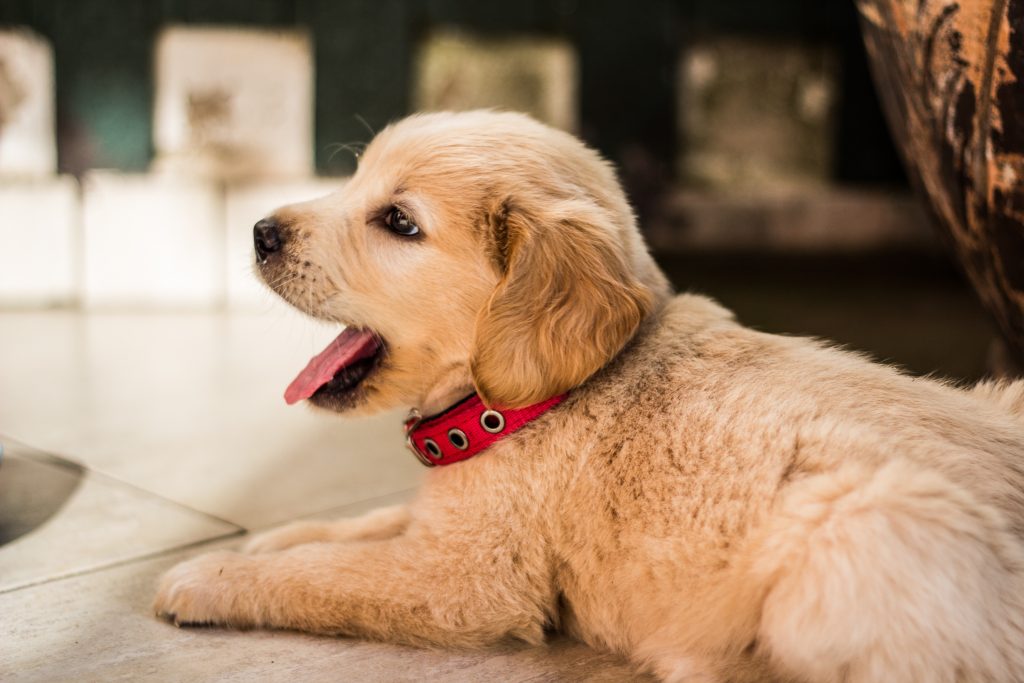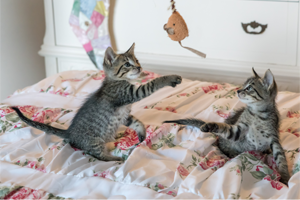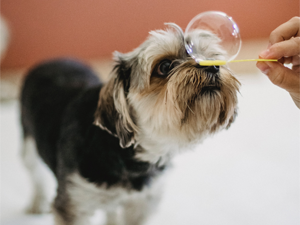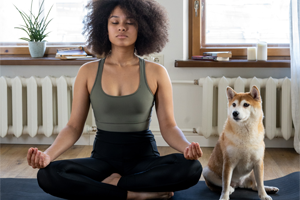Time to read: 8 mins
As new puppy parents we want to give our pups the best start to life possible. Making sure our young dogs get the right amount of exercise is part of this, along with the chance to experience social interactions and mental stimulus.
Walking Puppies
A common misconception is that puppies need a lot of exercise as they have a lot of energy to use up.
But, in actual fact, their bones, joints and muscles are still growing during the first year. This means that exercise does need to be limited to prevent problems in later life.
A good rule to follow is adding 5 minutes of exercise onto your puppies age in months. For example, a 16-week-old puppy would need no more than a 21-minute walk twice a day. You should also limit access to stairs for large breed dogs for the first few months.
When can I take my puppy for a walk?
Your puppy will be ready to go out for walks two weeks after they receive their vaccinations.
Before taking your puppy for a walk in a public place or near the road, it is a good idea to get them used to walking on a lead. Some dogs don’t have a lead attached to them until their first walk and this can be very scary and confusing for them.
Decide if you are going to use a harness or a collar, put it on your pet and allow them to walk around the house and the garden with it on. Occasionally clip on a lead and let them walk about with this attached too. Although, you should always stay with them just in case they get caught on something.
Every so often, lift the handle end of the lead. This will let the puppy get used to being joined to you and make it less of an issue when they are ready to go out and about for this first time.
What do I need to walk my puppy?
It’s worth doing some research on your puppy’s breed, so that you can further understand their temperament. This help prepare you for how they may react or behave when out walking,
It is the law in the UK that all dogs must wear a collar with an ID tag on it. It is not always a good idea to attach a lead to this collar as it can damage your puppy’s neck or throat if they pull. A harness works well, but keep the puppy on a short, fixed lead to keep them close to you and to reinforce the training you are doing with them.
Have some treats handy so you can reinforce good behaviour!
Meeting other dogs on a walk
If you meet another dog when you are out walking, it’s important that you don’t pick your puppy up straight away unless you genuinely feel they are in danger.
Doing so will teach your puppy to be scared of other dogs. Don’t be afraid to say no to people who ask to stroke your dog if you don’t feel it’s appropriate. Your dog does need to meet new people and dogs, but this can be overwhelming for them at the start so try and ease them into it.
Other factors to consider when walking your puppy
If it is very hot or cold outside you may want to adjust the timings and type of exercise that you do with your pup.
On hot days, try going for walks in the early morning or late evenings. On cold days look out for salt or grit on the pavements that could hurt your dog’s paws. Always remember to never exercise your puppy straight after a meal.
We hope you and your puppy have great fun together! If you need any further advice, please call one of our Registered Vet Nurses on the Scratch & Patch Careline.
Related articles
Alternative Exercises to do with your Pets







